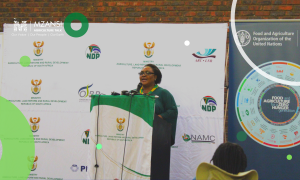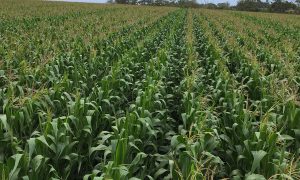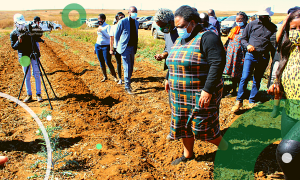On 15 July, the Agricultural Research Council (ARC) in conjunction with Plant Village University, hosted a webinar on Agroforestry in South Africa. Mzansi Agriculture Talk, caught up with one of the few senior researchers on agroforestry in South Africa, Dr Phokele Maponya. In this two-part series on Agroforestry, Dr Maponya tackles South Africa’s progress in comparison to world standards, hinderances of practising agroforestry and the benefits of practising agroforestry for smallholder farmers to name but a few.
In terms of the world standards and presenting in various information dissemination platforms globally, South Africa is still lagging behind in terms of advancing agro forestry full scale.
Firstly, the farming communities and government extension officers should understand that the adoption of agroforestry practices depends on a number of physical (environmental), as well as socio-economic pre-conditions that are related to successful cultivation of perennial crops and in particular trees. Secondly, the climatic conditions are critical for the trees to grow. Thirdly, the soil types, especially the deep ones, offer great potential for tree growing.
While the above environmental preconditions determine the promotion of agroforestry, some of my findings also indicated that it is important to understand the main socio-economic factors that determine the actual occurrence of agroforestry.
The issue of land and tree tenure is also delaying the SA farming communities to prosper in agroforestry as compared to the rest of the world. Most of the farming communities indicated that they are still relying on permission to occupy (PTO) form of tenure. It must be emphasised that land and tree tenure offer a good opportunity for the farmer to acquire financial support. For the majority of farmers assessed, security of land tenure is important for the adoption of agroforestry, i.e., access to land on which the farmer has the right to plant trees; rights over trees must be sufficient to justify the effort of planting them and the right to harvest and utilize trees must be exclusive enough to give a return on investment. If the farmer does not have the security that the land will be his/hers for a longer time, then he/her will not be interested in activities to improve the soil as observed in some farming communities in South Africa.
Best Paper awarded during the 3rd World Irrigation Forum, International Commission on Irrigation and Drainage (ICID), 01 – 09 September 2019, Bali, Indonesia
The other interesting finding for farmers to go full scale is the land size utilisation among farmers. Some of my findings established that farmers should maximise their land usage as much as possible and to grow as much food as possible for their household and for sale at the market.
It was observed in the Limpopo Province and Mpumalanga Provinces that when the farm size is large and labour availability is low, farmers were willing to adopt agroforestry practices such as woodlots. Contrary, when farm sizes decrease, farmers were more interested in higher yielding but more labour-intensive systems such as alley cropping or highly productive home gardens. Hence, we did some demonstration trials in the farmer’s home gardens and community gardens.
The demonstration trials were also coupled with agricultural practical training to raise awareness to farmers and extension officers about agroforestry. Challenges identified from the farming communities includes: Lack of commitment from some farming communities includes: (1) Lack of skills for selecting the right compartment for integration (2) Water challenges (3) Inadequate fencing (4) Uncontrolled roaming of game animals (5) Limited agroforestry knowledge and (6) Limited access to formal markets.
Nevertheless, the partnership with South African Forestry Company Limited (SAFCOL), Mountain to Ocean (MTO), Department of Forestry, Fisheries and Environment (DEFF), Universities Kwazulu Natal, Pretoria, North West and Mpumalanga is yielding positive results and has drawn interest from the international communities. The agrosilviculture community growers model involved SAFCOL and MTO allocating land to the nearby communities around their plantations. The Community members are also given production inputs and relevant support to produce food for themselves. This partnership and model have proved to be well accepted internationally given the invitations received to present it globally.
Dr Mpoyanya is a senior researcher for smallholder farmer and enterprise development, Agricultural Research Council.




















